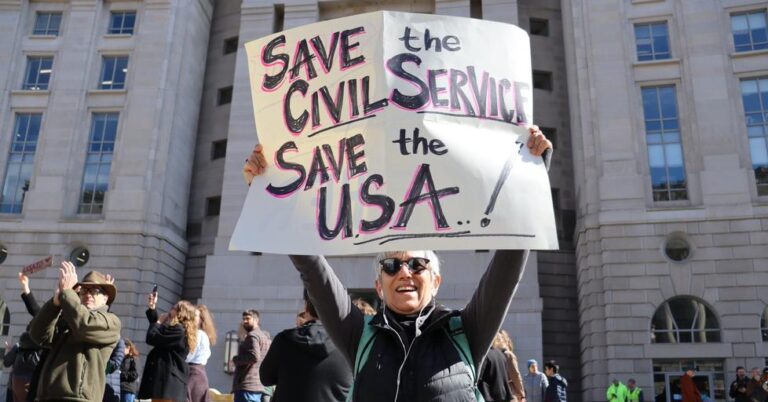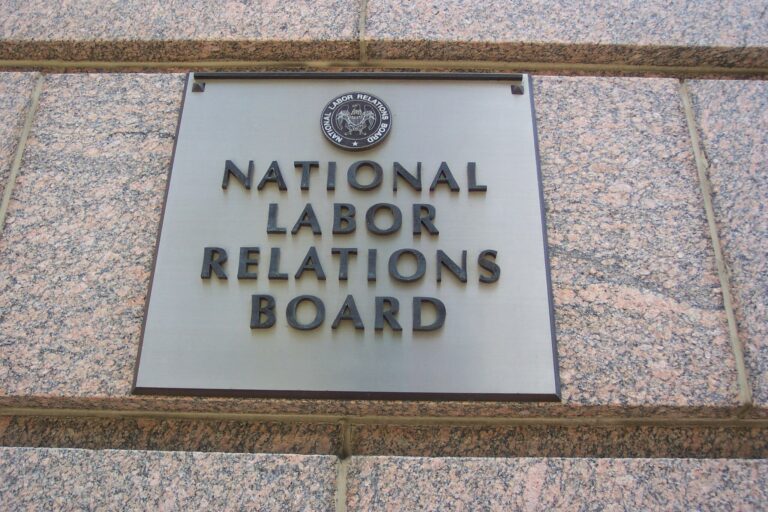
JJ Zeng is a student at Harvard Law School and a member of the Labor and Employment Lab.
Some of America’s most beloved federal employees, National Park Services workers, are some of the thousands of workers who have been hit by the Trump Administration’s firing of federal probationary officers. These indiscriminate firings could be irreparable.
Since January, the Trump Administration has aggressively culled the federal workforce, including firing over 16,000 probationary workers across federal agencies on February 14th, and encouraging more to resign through a voluntary buy-out. Workers affected by these cuts include nuclear weapons workers at the National Nuclear Security Administration, health workers at the CDC and NIH, and over 1000 workers within the National Park Services and over 2000 workers within the U.S. Forestry Service.
Legal challenges since then have offered hope but ensured nothing but uncertainty for these workers.
In March, a lower federal court ordered Trump to rehire probationary workers. Senior District Judge William Alsup in the Northern District of California found that the terminations across six agencies were directed by an office without authority; his ruling had the effect of ordering 1000 EEs in the NPS reinstated. In Baltimore, District Judge James Bredar also found that the firings broadly did not satisfy 60 days’ advance notice and ordered the workforce to be returned to the status quo.
But as NPS planned to put its fired probationary workers back on the job, the Supreme Court stayed the California court’s order on the basis of standing. A day later, the Fourth Circuit stayed the Maryland court’s order for lack of jurisdiction. The upshot is that as litigation proceeds in both instances, federal probationary workers are back to where they started in February.
The Effects on Parks
Millions of people visit national parks each year, with an estimated 325 million visitors in 2023. Without a fully staffed agency, parks will be ill-equipped to handle increased foot traffic. Visitors will experience longer lines, trash buildup, changed visitor hours, and delays for facilities maintenance.
National parks workers perform many functions outside of facilitating tourism. They also conserve natural resources, maintain lands for public use, respond to search-and rescue incidents, and manage the threat of wildfires through prescribed burns and emergency responses. The federal layoffs pose a real safety risk, as NPS employees are responsible for carrying out hundreds of search-and-rescue operations every year. With fewer people to manage wildfire crises (which have become increasingly frequent and destructive), fire season is also expected to “get worse.” Even some workers in the Forest Services, whose jobs were considered “essential” or supplemental to emergency response, were dismissed.
Yosemite, for example, a park spanning nearly 1,200 square miles with nearly 4 million visitors per year, lost its only locksmith, who had apprenticed under the previous locksmith who worked at the park for over 20 years, and was fired 3 weeks before the end of his probationary period. “I’ve had exemplary performance and am essential for park operations,” he wrote in his Instagram post. “The people that fired me don’t know who I am, or what I do. They simply don’t understand this park and how big and complex it is.”
It is not just recreation and the enjoyment of national parks that are at stake here. The culling of NPS workers have been part of a broader effort by the Trump Administration to cripple agencies that are involved in conservation efforts, resource management, the protection of public lands, and the protection of the climate. For example, researchers in climate science have already been affected by the new stays, with hundreds of employees at the National Oceanic and Atmospheric Administration being officially terminated (again) on April 10. In May, the Washington Post reported suspension of air-quality monitoring programs at national parks across the country.
The Effects on Employees
Many of the fired federal workers have specialized knowledge that is required to run federal programs efficiently. For park services employees, however, employment at the parks isn’t just employment for them.
Many workers aren’t just losing a job, but a lifestyle. Some of them live in remote areas and now must find housing. The ex-locksmith in Yosemite, for example, wrote “I have lost my career and I have NO PLAN. This was my dream! All of my eggs were in this basket and I planned to stay till retirement. I had an appointment to meet a realtor today, but canceled, everything has been flipped upside down.”
A lead ranger at the Mendenhall Glacier Visitor Center in Alaska also lost her “dream job.” “I really showed up to my job every day, loving it and wanting to do the best and worked really hard to make a career for myself,” she said.
Layoffs also disrupt reliance interests in permanent employment with the federal government. Losing associated employment benefits, such as health insurance, or paid maternity leave, could derail life plans to start a family. One Forest Services employee voted for Trump upon his promise to make IVF treatments free, but then lost her job during the layoffs.
The Promises and Failures of the Federal Government Purges
There are more casualties surely to come. In March, Trump issued an executive order directing agencies to submit reorganization plans and prepare for large-scale reductions. The restructuring proposes to “maximize efficiency and productivity.”
But the already depleted workforce for the parks cannot stand further downsizing. As of May, NPS has lost about 13% of its workforce, with thousands of layoffs yet to come, as the administration has begun implementing large-scale “reductions-in-force” layoffs. Another 1,500 NPS employees are expected to be fired around mid-May.
With the incoming “reductions-in-force” effectuating massive staff cuts, especially to NPS Science Directorates (comprised of hundreds of scientists and specialists who help preserve resources in the parks), work requiring significant experience will become unmanageable. Workers have expressed uncertainty about the sustainability of fish survey work, and the kneecapping of the administration’s own priorities of approving oil and gas leasing, and other permits.
Faced with such uncertainty, some institutional knowledge will be lost forever. The Park Services attracts a specific type of employee—an employee who does not mind that the work can be at times itinerant, seasonal, and physically demanding, or that the site of the work is in remote areas. Now these workers have been “demoralized and pushed out,” raising questions about where “the next generation [of rangers] is going to come from.” In the future, the agencies may be hard pressed to convince other people to come back to work.
NPS and the Forest Services, thinly staffed since 2010, will predictably struggle even more to staff critical functions for visitors and maintenance. Even if the legal challenges turn out in favor of the probationary workers, some workers have already found new jobs or accepted the deferred resignation offers which have been rolled out of various agencies to persuade people to leave before mass layoffs. Equitable remedies such as backpay and reinstatement are insufficient to address the damage to morale caused by the loss of employment for the past few months. Even if probationary workers get reinstated again, they may no longer see a future in the park services as they once did before.
National parks, often credited as “America’s best idea,” have historically received popular bipartisan support. Today they are the latest victims of Trump’s federal downsizing.










Daily News & Commentary
Start your day with our roundup of the latest labor developments. See all
December 22
Worker-friendly legislation enacted in New York; UW Professor wins free speech case; Trucking company ordered to pay $23 million to Teamsters.
December 21
Argentine unions march against labor law reform; WNBA players vote to authorize a strike; and the NLRB prepares to clear its backlog.
December 19
Labor law professors file an amici curiae and the NLRB regains quorum.
December 18
New Jersey adopts disparate impact rules; Teamsters oppose railroad merger; court pauses more shutdown layoffs.
December 17
The TSA suspends a labor union representing 47,000 officers for a second time; the Trump administration seeks to recruit over 1,000 artificial intelligence experts to the federal workforce; and the New York Times reports on the tumultuous changes that U.S. labor relations has seen over the past year.
December 16
Second Circuit affirms dismissal of former collegiate athletes’ antitrust suit; UPS will invest $120 million in truck-unloading robots; Sharon Block argues there are reasons for optimism about labor’s future.